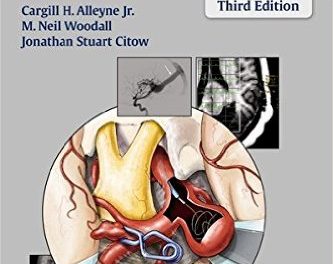Authors: John Bailitz MD, Faran Bokhari MD, Thomas A. Scaletta MD, and Jeffrey Schaider MD.
Publisher: McGraw-Hill – 588 pages
Book Review by: Sonu Chandiram
When an accident victim arrives in an ambulance and is being wheeled in to the emergency room, time is of the essence for the doctor to save the patient’s life.
While emergency physicians are taught in class to take the right actions, the hands-on experience they acquire in the emergency ward is itself a part of their overall training. The more they do, the more they learn and become that much more competent.
But sometimes, in order to decide on the correct course of action to take, the doctor may need to quickly refer to a handbook such as this one – Emergent Management of Trauma.
This is a compact, easy-to-carry book that is lightweight and slim enough to slip into a lab coat and carry around. It is a concise guide covering a large range of injuries that helps the emergency physician evaluate the patient and determine what type of injury was inflicted on him.
Written by four doctors who work in Chicago hospitals, this life-saving book quite literally is comprehensive enough to provide quick answers to almost any question or problem the emergency physician faces when the injured patient is right before him and he must take immediate action. At least, until the acute care surgeon takes over the patient from him.
The book uses an outline whose format is logically arranged. It contains hundreds of illustrations and it covers the essential physical areas of diagnosis and treatment of the trauma patient.
This book covers the range of diagnosis and treatment options available from pre-hospital care to treatment in the emergency area and into the operating room. It provides suggestions and requirements to ensure smooth transition to surgery, if required.
The book has bulleted lists that provide information in a rapid-access format. It contains diagrams, in step-by-step fashion of critical life-saving procedures, along with discussion of what procedure is appropriate for a given situation.
This book was written not just for emergency physicians. It is meant for all trauma care practitioners. It is useful for a range of people involved, from paramedics to nurses to interns to resident physicians to attending physicians and surgeons.
This 588-page book is divided into six main sections:
Resuscitation Concepts: covering pre-hospital issues, hospital organization, patient evaluation, airway restrictions, shocks and hemorrhages, and fluids
Anatomic Areas of Injury: including important management algorithms, covering major traumatic injuries from the top to the bottom areas of the patient’s body. It covers injuries to the head, eyes, face, spine, neck, chest, abdomen, pelvis, and genitourinary organs.
Extremity Trauma: from hand to wrist to forearm to elbow to humerus to shoulder and clavicle, to hip and femur, to knee to leg and ankle, to foot., and all parts thereof.
Special Groups: covers specialized treatment of trauma on children, pregnant women and elderly people.
Environmental Issues: addresses problems such as temperature extremes, burns, near drowning, terrorism, nuclear radiation, biological agents (bacteria, viruses, toxins) and harmful and near-fatal chemicals.
Useful Resources: provides procedure instructions, radiograph interpretations and anatomy, organ procurement, infection prophylaxis, aftercare instructions, and a pertinent drug formulary, including major drug groups.
This useful guide has pieces of information that helps care givers make certain determinations. For example, for paramedic, what vital signs to check to determine significant traumatic injury, take an injured person to a trauma center?
Three determinants of vital signs are: when systolic blood pressure is less than 90 mm Hg; when heart rate (HR) is under 50 or over 120 beats per minute; and when respiratory rate (RR) is under 10 or over 30/min.
Another means of determining significant traumatic injury to a person is the Glasgow Coma Scale or GCS. A table is given in the book to check levels of response to three stimuli and if the total score of the three items is between 3 and 15, the person must be brought to a trauma center.
This has to do with responses to your requests by the patient by opening his or her eyes (ranging from no response at all to fully opening his eyes); by verbal response (ranging from no response at all to fully oriented); and by motor response (ranging from no response at all to fully following your commands).
This is a highly useful, handy guide for emergency and trauma care doctors, which covers a large range of injuries. It provides quick, easy-to-locate answers to many problems and questions. There is a huge amount of information packed into this compact book.






